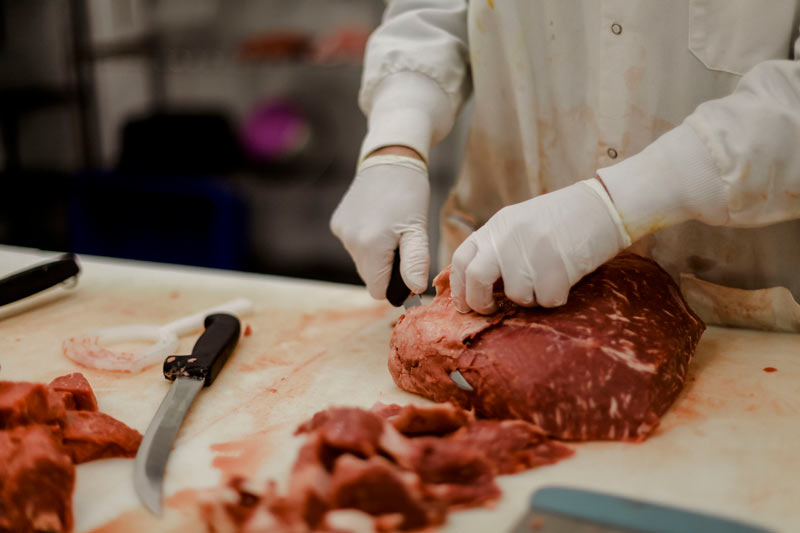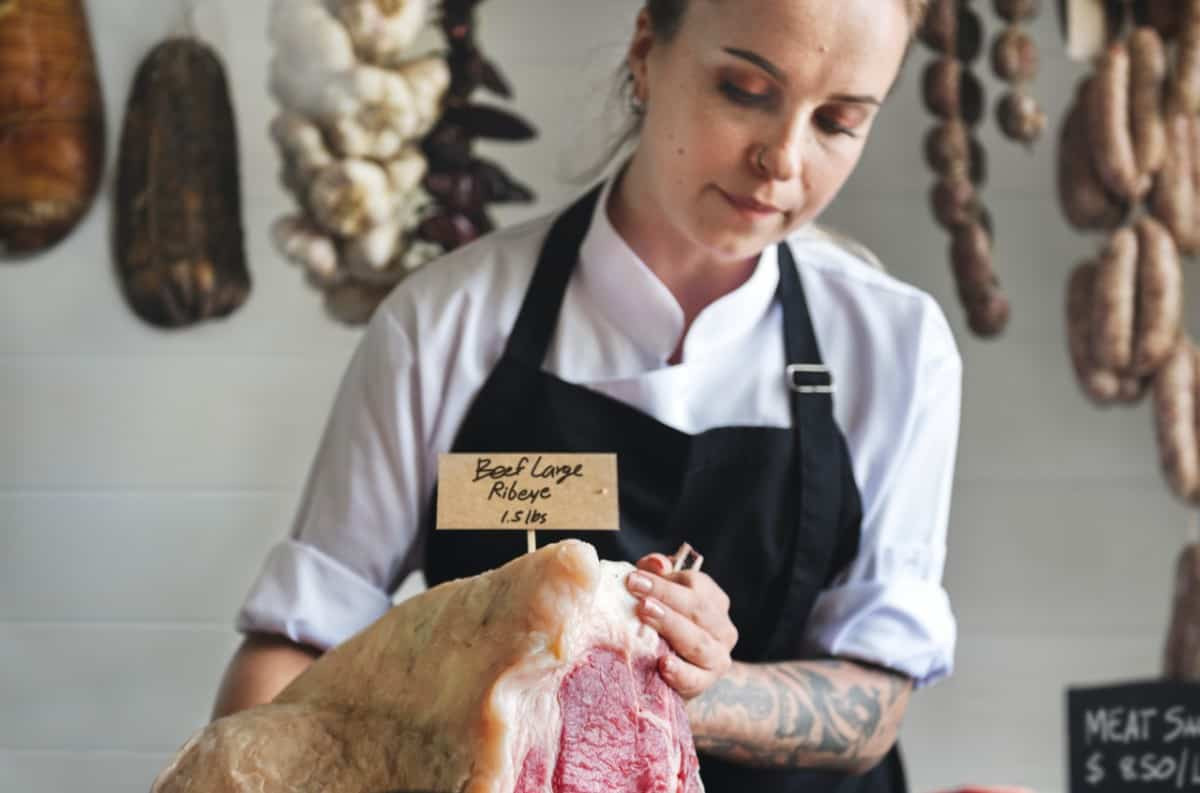Everything About Meat Markets: Understanding Their Role in Sustaining Regional Farmers
Meat markets offer an important feature in regional economies by linking the space between farmers and consumers. They offer a direct sales network that improves the freshness and quality of meat items. Beyond convenience, these markets play a substantial duty in promoting lasting farming and sustaining the source of incomes of neighborhood farmers. However, the implications of this relationship extend additionally than one could anticipate, increasing questions about sourcing techniques and customer selections.
The Significance of Meat Markets in Neighborhood Economic Climates
Frequently neglected, meat markets play a necessary function in strengthening local economies by supporting farmers and creating jobs. These establishments work as essential middlemans, supplying a platform for local manufacturers to sell their items directly to consumers. By acquiring in your area sourced meat, consumers add to the sustainability of close-by farms, guaranteeing their viability and promoting farming diversity.
Meat markets develop work possibilities, varying from butchers and sales staff to monitoring and logistics functions. This task creation stimulates the regional economy, promoting a sense of community as citizens engage with their community businesses.
Furthermore, meat markets commonly draw in customers that look for high-quality, fresh products, which can bring about enhanced foot web traffic and sales for surrounding organizations. In general, the visibility of meat markets can greatly boost neighborhood financial wellness, fortifying connections between farming and community health while supporting the source of incomes of farmers.

Linking Consumers and farmers: How Meat Markets Run
Meat markets act as crucial hubs that attach local farmers straight with customers, facilitating a streamlined supply chain that profits both celebrations. By sourcing products from neighboring farms, these markets ensure that consumers get fresh, top notch meat while sustaining local agriculture. The procedure of meat markets entails developing connections with farmers, typically permitting them to showcase their products and share their farming techniques.
Consequently, consumers get to a varied selection of meats that reflect local flavors and preferences. Openness is an essential aspect of these markets, as customers are often supplied with info about the sourcing and dealing with of the meat. This straight connection cultivates depend on and loyalty in between farmers and consumers, boosting neighborhood connections. Furthermore, meat markets often participate in marketing activities, such as farm-to-table events, which even more enhance the consumer's experience and understanding of local farming practices.
Advertising Sustainable Agriculture Practices
Advertising sustainable farming practices is vital for the future of food manufacturing and environmental health. By concentrating on ethical farming methods, urging biodiversity, and advocating for regional and seasonal sourcing, the farming sector can considerably minimize its eco-friendly impact. These practices not just support the ecological community but also promote a healthier partnership in between customers and farmers.

Honest Farming Methods
A growing number of farmers are taking on moral farming strategies to improve sustainability and minimize environmental impact. These techniques concentrate on accountable land management, decreasing making use of chemical fertilizers and chemicals, and welcoming organic practices. Strategies such as crop rotation, cover chopping, and agroforestry not only improve dirt health and wellness yet also promote biodiversity. Additionally, farmers are significantly focusing on pet well-being by reducing and offering pasture-based systems arrest techniques. By focusing on neighborhood resources and community interaction, honest farming promotes a resilient agricultural system. This change not only benefits the environment however also enhances the link in between customers and farmers, motivating informed buying decisions that sustain sustainable methods. Ultimately, these methods offer to develop a much more lasting future for agriculture.

Biodiversity and Ecological Community Health And Wellness
While numerous agricultural practices have historically prioritized return over environmental equilibrium, a growing recognition of biodiversity's significance has actually arised amongst customers and farmers alike. Biodiversity improves environment resilience, sustaining dirt health and wellness, insect control, and pollination. By incorporating diverse crops and livestock, farmers can produce extra stable ecosystems that reduce reliance on chemical inputs and improve general productivity. Sustainable farming methods that advertise biodiversity not only protect all-natural environments but additionally add to the long-term viability of farming. Meat markets play an essential duty in this standard shift by supporting for local products that prioritize eco-friendly health and wellness. By picking to resource from farms that welcome biodiversity, consumers can support practices that ensure a sustainable future for farming and the setting.
Local and seasonal Sourcing
Regional and seasonal sourcing not only enhances the freshness of food but also supports sustainable farming methods that profit both farmers and consumers. By prioritizing neighborhood meat markets, customers can link straight with farmers, cultivating a feeling of community and depend on. This design minimizes the carbon footprint linked with long-distance transportation, advertising ecological sustainability. Farmers gain from more secure revenues and a trusted market for their products, which encourages liable farming practices. In addition, seasonal sourcing urges diverse farming methods, permitting farmers to rotate plants and livestock, consequently keeping dirt health and wellness and biodiversity. On the whole, this approach produces a much more site durable food system that straightens with the values of sustainability, neighborhood, and quality assistance, enhancing the vital web link in between consumers and neighborhood farming systems.
The Role of Transparency in Sourcing Meat
What elements add to customer count on meat products? Openness in sourcing is an important element. Consumers progressively inquire regarding where their meat comes from, including the practices and ranches involved in elevating the pets. Meat markets that prioritize transparency commonly display clear labeling, detailing the source and production approaches utilized. This visibility cultivates self-confidence and allows consumers to make enlightened choices.
In addition, clear techniques can consist of farm visits, collaborations with neighborhood farmers, and sharing tales regarding the pets and their environments. As consumers end up being more enlightened regarding food sourcing, they tend to prefer meat items from suppliers who are honest with details. This need for openness not only enhances consumer count on yet also motivates meat markets to establish moral partnerships with regional farmers. Eventually, transparency sustains a cycle of accountability, profiting both customers and manufacturers in the meat sector.
Sustaining Pet Welfare Via Resident Sourcing
Supporting animal well-being with local sourcing depend upon the adoption of ethical farming techniques. By focusing on transparency in sourcing, customers can make informed choices that reflect their worths. In addition, area involvement initiatives cultivate a stronger connection in between customers and farmers, enhancing the total commitment to humane treatment of animals.
Ethical Farming Practices
While customers progressively prioritize ethical factors to consider in their food choices, local sourcing supplies a viable course to supporting pet well-being. Ethical farming methods emphasize gentle treatment of animals, guaranteeing they have ample room, correct nourishment, and access to outside settings. Regional ranches commonly abide by these requirements, as they are more liable to their neighborhoods and customers. By choosing to source meat locally, consumers can support farms that focus on gentle and lasting techniques over industrialized techniques, which typically jeopardize animal health. This connection cultivates a much deeper understanding of food production and motivates liable consumption. Ultimately, local sourcing encourages customers to make informed options that align with their values regarding ethical therapy of animals in the food sector.
Transparency in Sourcing
Just how can transparency in sourcing improve customer rely on neighborhood meat markets? By supplying clear info regarding the beginnings of their items, neighborhood meat markets foster a feeling of responsibility and honesty. When consumers recognize the sourcing techniques, consisting of the treatment of pets and farming approaches, they are more probable to really feel certain in their purchasing decisions. This openness enables consumers to straighten their worths with business they sustain, recognizing they are adding to moral pet welfare and lasting techniques. Additionally, regional meat markets can display partnerships with close-by farms, stressing area support and enhancing a favorable partnership in between producers and customers. Ultimately, transparency in sourcing not only develops count on however likewise encourages educated choices among customers.
Area Interaction Efforts
What function do neighborhood engagement efforts play in promoting pet well-being through local sourcing? These campaigns significantly boost understanding and understanding of ethical farming techniques amongst customers. By cultivating connections in between regional farmers wagyu steak shipped to me and community members, meat markets can emphasize the relevance of humane therapy of pets. Educational workshops and farm tours enable customers to witness firsthand the problems under which animals are increased, reinforcing the worth of neighborhood sourcing. Furthermore, neighborhood occasions, such as farm-to-table dinners, highlight the partnership in between animal welfare and sustainable practices. Through these engagements, customers develop rely on regional meat markets, urging them to sustain moral promoting a culture and sourcing of liable consumption that focuses on animal welfare in the area.
Health And Wellness Advantages of Picking Local Meat Products
Selecting neighborhood meat items uses numerous wellness benefits that can considerably improve overall well-being (meat markets edwardsville il). One considerable advantage is the minimized time between ranch and table, which commonly leads to fresher meat with greater nutritional worth. Neighborhood meats have a tendency to be complimentary from dangerous chemicals and additives generally found in factory-farmed choices, adding to a cleaner diet regimen
Additionally, neighborhood farmers Recommended Site frequently focus on humane and lasting practices, bring about healthier pets that generate better-quality meat. Grass-fed and pasture-raised animals, regularly found in regional markets, normally have greater degrees of omega-3 fats and lower levels of hydrogenated fats contrasted to their feedlot equivalents.
Sustaining local meat items fosters community wellness by ensuring that consumers have access to safe and sensibly sourced food. By choosing neighborhood, people not only nourish themselves yet also add to the health of their neighborhood and atmosphere.
Making Educated Options at the Meat Market
When going across a meat market, recognizing the essential factors that affect top quality and sourcing can encourage customers to make enlightened selections. Shoppers should prioritize regional products, which usually come from farms with sustainable techniques. Recognizing tags such as "grass-fed" or "organic" can additionally direct decisions, as these frequently indicate higher well-being requirements and nutritional benefits.
Involving with the butcher is essential; educated personnel can provide understandings right into the sourcing of their meats and recommend cuts that fit numerous food preparation approaches. Customers are urged to inquire regarding the farm's techniques, consisting of pet treatment and feed.
Furthermore, analyzing the meat's shade and structure can reveal freshness and high quality. Lean cuts need to appear brilliant and damp, while fatty cuts need to have a marbled appearance. By integrating these methods, customers can with confidence select meats that line up with their worths and support local agriculture.
Often Asked Questions
What Kinds of Meat Are The Majority Of Commonly Cost Regional Meat Markets?
Neighborhood meat markets generally provide a variety of meats, including beef, pork, chicken, and lamb. These facilities frequently feature specialized cuts, sausages, and in your area sourced products, satisfying varied culinary choices and customer needs.
How Can I Find a Meat Market Near My Location?
To locate a meat market close by, one can make use of on-line maps, online search engine, or neighborhood directories - edwardsville meat market. Furthermore, asking next-door neighbors or close friends for suggestions usually produces important understandings right into the most effective local options available
Are There Seasonal Variations in Meat Accessibility at Meat Markets?
Seasonal variants in meat schedule at meat markets usually happen, affected by variables such as neighborhood farming practices, pet reproduction cycles, and seasonal need. This can influence the types and amounts of meat used throughout the year.
Do Meat Markets Deal Unique Promotions or Price Cuts for Mass Purchases?
Meat markets usually give unique promos and discount rates for bulk acquisitions. This practice urges consumers to purchase larger amounts while making it possible for the marketplaces to manage inventory efficiently, profiting both consumers and the organization monetarily.
Can I Ask For Details Cuts of Meat at the marketplace?
Yes, customers can commonly ask for details cuts of meat at the marketplace. Several butchers want to fit unique orders, guaranteeing that patrons receive the precise cuts they desire, tailored to their preferences.
By sourcing items from close-by ranches, these markets ensure that consumers obtain fresh, high-grade meat while sustaining neighborhood agriculture. By prioritizing neighborhood meat markets, customers can attach straight with farmers, promoting a feeling of neighborhood and count on. Exactly how can openness in sourcing boost customer count on in local meat markets? Local meat markets normally offer a variety of meats, including beef, lamb, pork, and hen. Seasonal variations in meat availability at meat markets commonly take place, affected by variables such as local farming methods, pet reproduction cycles, and seasonal demand.